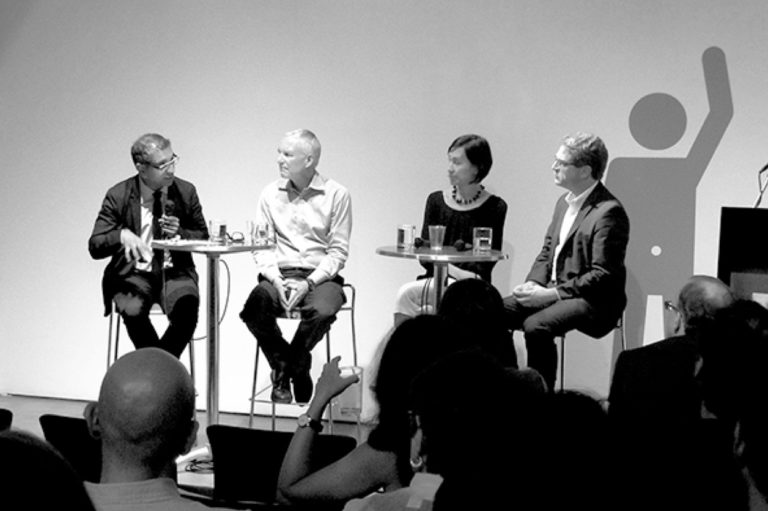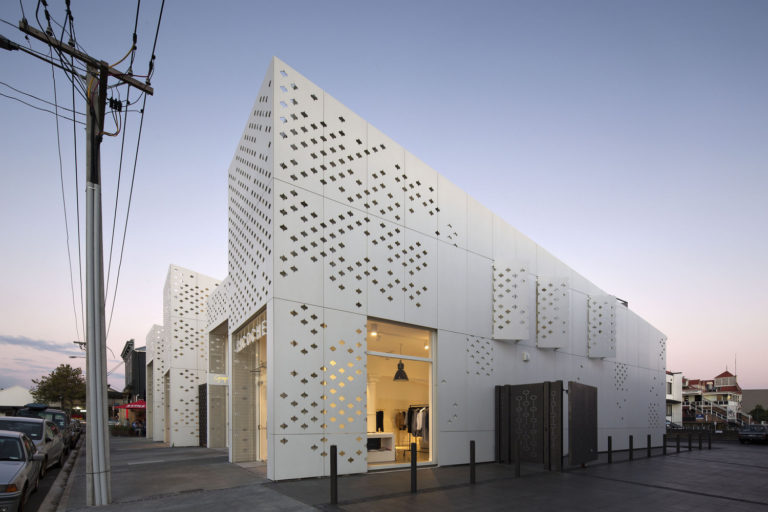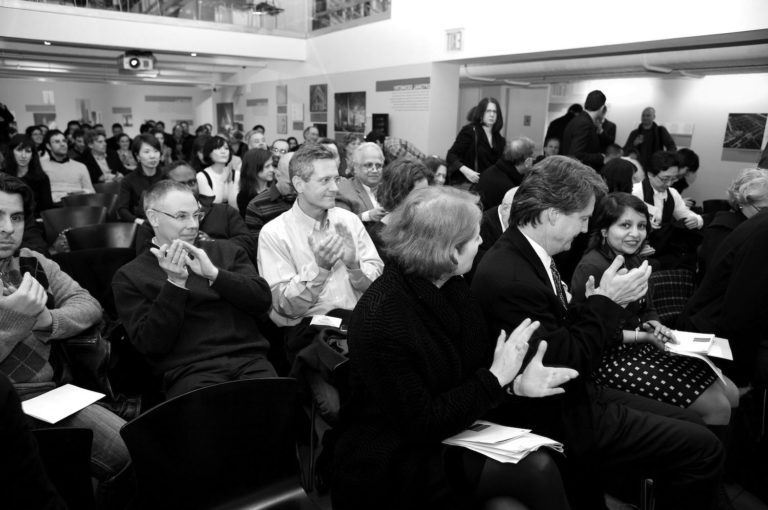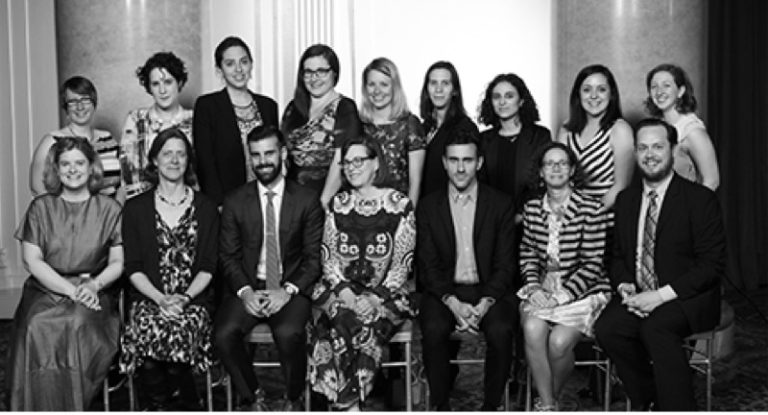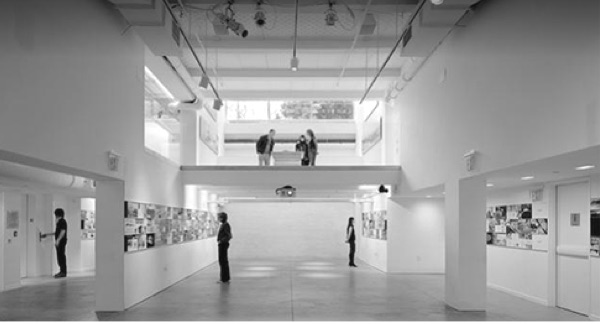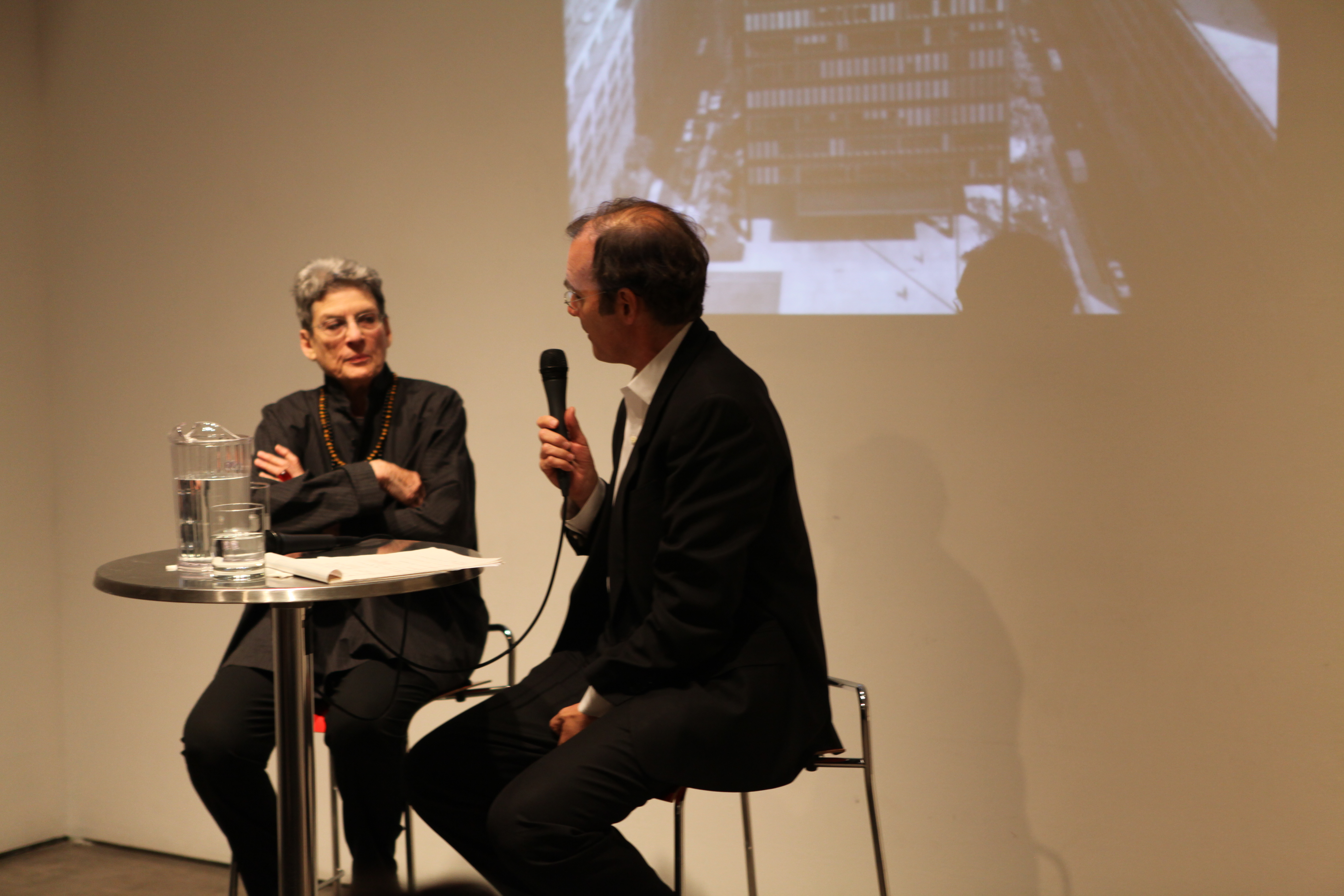by: ac
“An elegant building, an elegant book, an elegant writer,” is really all anyone needs to say about the newly published Building Seagram by Phyllis Lambert, Hon. FAIA, and her delightful Oculus Book Talk at the Center for Architecture on 10.28.13, featuring Lambert and attentive foil, Barry Bergdoll.
Building Seagram is what Bergdoll described as a biography of a building, but is equally an autobiography of Lambert: as she described herself, she was born when she started to work on the Seagram. It is a story of a phenomenal opportunity for Lambert in her youth (at 27 years old), and how she deftly handled the responsibility and the consequences of the building. As a young artist, she was charged with the task of interviewing and vetting the top architects of the era, and illustrating to her father, Samuel Bronfman, the implications of choosing from the likes of Eero Saarinen and Le Corbusier, and, finally, the selection of Mies van de Rohe. The inclusion of Philip Johnson in the project sounds almost magical, and is explained via his work – his ability to create drama. Lambert maintained that in 1951 they were the most important architects since the Renaissance, and every act for the Seagram Building, from the selection of the architect to the art collection, had a Medici-like tenor. Lambert passed on to her father her belief in the need to make the building a quality construction as an obligation to the city – nothing less would do.
The most impressive part of Lambert’s tale is her ability to discuss the evolution of the building from its most micro scale to its most macro scale. She presents a nuanced analysis of the choice of bronze for the famous glass curtain wall, a lovely discussion of the collection of historic drinking vessels exhibited in a Philip Johnson-designed silk-lined display case, and then an impassioned section on the plaza design and its massive impact on the country’s discussion of urban public space.
Lambert’s take on Mies was that he was unendingly generous, and the building, particularly the plaza, can be attributed to his generosity: the scale of the stair treads, the wide guard rails for sitting, and large pathways into the building. She describes the division of labor between the two architects; Mies was interested in developing his architectural language, and Johnson reveled in the details. Her recollections of Johnson are fascinating. His intense and poetic work with lighting designer Richard Kelly, and his innate sense of materiality are all thoughtfully logged. Lambert gives a wonderful description of Johnson’s and Mies’s affinity for the 19th-century architect Schinkel and their differing takes on his work. Mies “pursued” the unity of the house and garden as Schinkel proposed; Johnson’s homage was the fabric-draped bedroom in the Glass House.
The Seagram Building exists as a benchmark in architectural thought. Its grand plaza is a hallmark of public engagement in urban architecture. The sensuous materials both inside and out is the pinnacle of stability and longevity in the building’s atmosphere; its small footprint relative to its public space inspired many zoning regulations (the 1961 New York City Zoning Resolution), and real estate and corporate innovations. The building defined New York commercial architecture. It also set some of the most interesting precedents and conditions of New York’s Landmarks legislation. The Seagram’s road to landmark status started years prior to its actual eligibility, but this and the innovation of the lavish Four Seasons interior as a landmarked entity is remarkable.
As Bergdoll stated, the most interesting thing about the book is that Lambert did not end the story at the conclusion of the construction. The story continued into Lambert’s stewardship of the building and the final result of this stewardship with the new owners. The book is, quite simply, a page-turner. At the close of the book talk, Lambert remarked: “Thank heaven we have the Seagram Building.” I say thank heaven we have Phyllis Lambert.
Annie Coggan is a principal with Coggan and Crawford Architects, and teaches at the Fashion Institute of Technology and the School of Visual Arts in New York City.
Event: Oculus Book Talk: Phyllis Lambert, Building Seagram
Location: Center for Architecture, 10.28.13
Speakers: Phyllis Lambert, Hon. FAIA, Author, Building Seagram; Barry Bergdoll, Professor of Architectural History, Department of Art History and Archaeology, Columbia University, and former Philip Johnson Chief Curator of Architecture and Design, Museum of Modern Art; and Jill N. Lerner, FAIA, AIANY 2013 President (opening remarks)
Organizers: AIANY Oculus Committee and DoCoMoMo New York Tri-State
Sponsors: Kramer Levin

